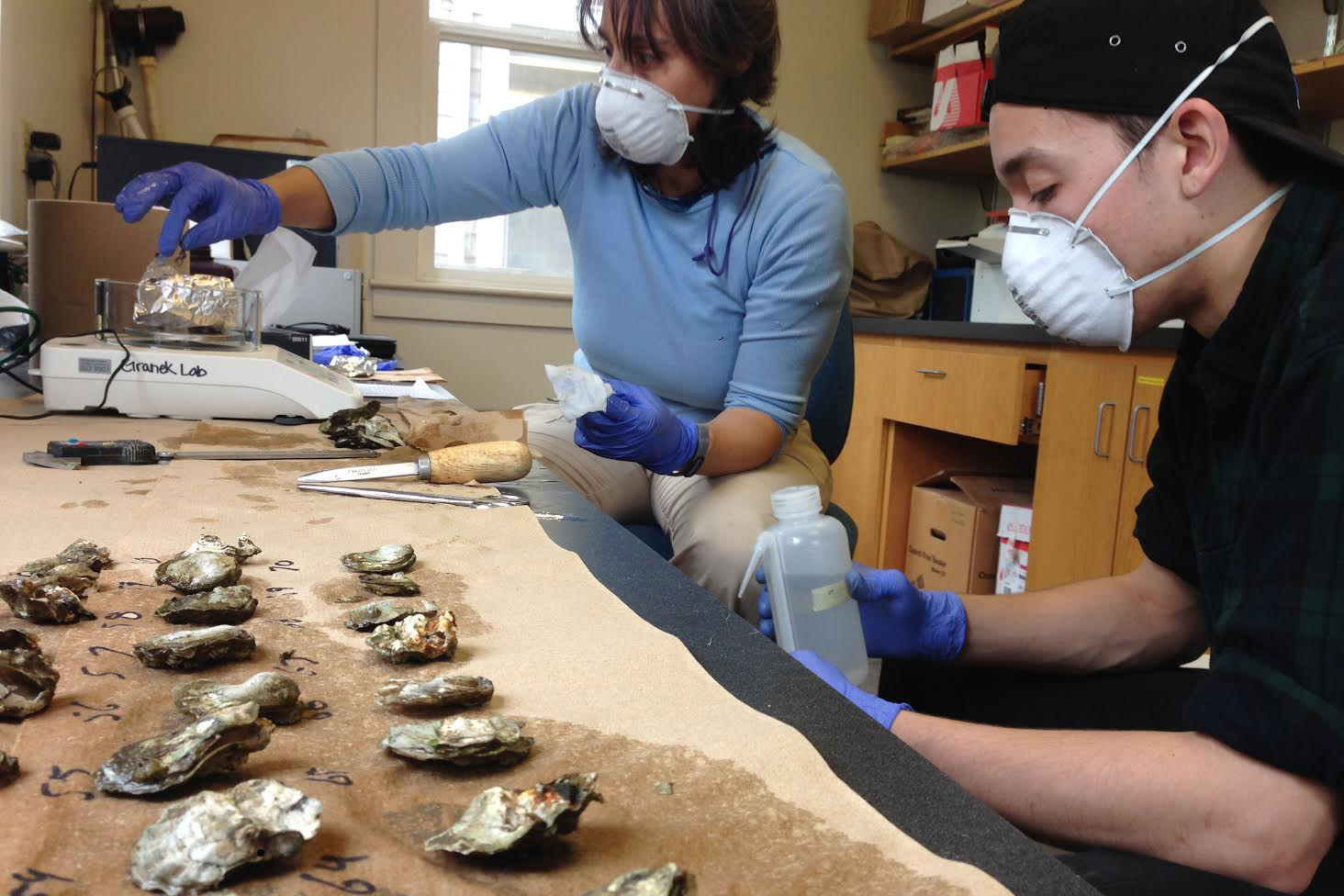The Portland State Department of Environmental Science and Management conducted research on local oysters and found harmful compounds such as pharmaceuticals, pesticides and mercury.
The study began in summer 2013, and continued through spring 2014. ESM shared data and samples with the Oregon Department of Environmental Quality, to compare their data with other regions and species.
Their region of research was Coos Bay and Netarts Bay.
The Vanguard talked to one of the associate professors involved in the project, Elise Granek. She is an associate professor of environmental science, a marine ecologist, conservation biologist and fellow, and she works under the Institute for Sustainable Solutions and ESM.
Vanguard: What were the results?
Elise Granek: We looked at the emerging contaminants in native Oregon oysters across two estuaries and 30 seasons. We found that contaminants varied both between estuaries and feverely. We found many more types of contaminants in the oysters in the spring. The next highest was in the summer and the lowest [variety] was in the fall. Some of the seasonality is related to environmental factors. When water is being flushed through systems, it’s more likely that during the spring more is coming out due to the rain. It is probably related to use as well. We see diphenhydramine across multiple seasons. It’s an antihistamine and it is an ingredient in Benadryl. It maybe used more across different seasons. Some of the antibiotics we only saw at one time point, and that may be related to the fact that there are short-course antibiotics for individuals to take once. For example, if strep throat goes through the community, you might see the antibiotics that were prescribed in the wastewater but you wouldn’t see it throughout the whole year.
VG: Why did you choose Coos Bay and Netarts Bay as the area of research?
EG: We were interested in the ecology of the oysters. Looking at whether the contaminants are accumulating in the oysters, the ultimate question being, how might these compounds affect this declining population of native oysters? The population has declined in oysters in Oregon and [on the] West Coast in the past decades. The places where there’s still reliable populations are in the Netarts and Coos Bays.
VG: How can these areas compare to other areas in Oregon and the West Coast in general?
EG: There has been a recent restoration action plan for native oysters. I know throughout the region there’s a decline. Our theme in Oregon is that the coastal population tends to pretty low, but in terms of contamination, it’s variable. There was another study on environmental pollution and the salmon in estuaries that feed into Puget Sound. There were more compounds in salmon than oysters. We found ibuprofen in the water but there wasn’t any present in the salmon. However, all the levels of contamination were higher than the levels in the oysters in Oregon.
VG: How did the toxins get there?
EG:
Pharmaceuticals
For the pharmaceuticals and personal care products, the most likely source of those are wastewater. It’s most likely they came from wastewater plant effluent or septic effluent or the combination of those two. Most of them are human-use products or household-based. I guess they could be from a hospital but the levels we were seeing were probably more representative of what’s getting flushed down the drain.
Pesticides
We also found a lot of different kinds of legacy contaminant. We found a number of pesticides, and those are most likely from agricultural or forestry application compounds. Those are non-point source, so it’s hard to pinpoint exactly where they came from other than the sediment and the oysters.
Polychlorinated biphenyls (PCBs)
The PCBs are likely from legacy. It’s hard to say what the source is. When folks sample water around the world they find PCBs because of the long-term use of them historically.
Flame retardants
We were very perplexed on the source. The flame retardants in Coos Bay aren’t so surprising because they are in our chairs, mattresses and sofas and can be released over time. As people clean things, they can [become] airborne or washed into waterways. They used to be widely used in baby clothes. To see some of it wasn’t surprising, but what was really surprising was to see the really high levels and the large range of types that we saw in Netarts Bay. There’s just so little industry in Netarts Bay that it’s hard to imagine what the source of the flame retardants is.
Mercury
The Oregon Department of Environmental Quality stated that the mercury level we found was lower than what was found in the fish in Oregon. It is notable though that the mercury levels we found were higher than what you see in oysters in the Gulf of Mexico and in France for example. It may be that the main sources of mercury are from mining. I don’t know of any mines in the bays, but if there were historically mines there, that could be the source. Another factor could be atmospheric deposition. Mercury is used by coal-powered power plants, and other studies have modeled the fact that some mercury from coal-powered power plants can make its way through the air to our continent from Asia.
VG: Why oysters?
EG: Trying to understand contaminant exposure is one of the main factors affecting populations. We’ve done some work on mussels as well, but for this study we were targeting these native oysters because they were declining, unlike the mussels. They are also an ecologically important species.
VG: Now that the ESM has acquired all the data, what’s the next step?
EG: I think that, with a lot of research, we find things that generate even more questions. We as a group have a lot of questions about sources, questions about how the mixtures of contaminants may be impacting oysters and other species in the estuaries. Although they are considered within the Oregon state health values, are the levels [high enough] that if folks eat seafood on a regular basis might we see some of these compounds in their system? For example, with the pharmaceuticals, will we see these compounds in individuals who don’t take these pharmaceuticals, in their bloodstream and urine as a result of human consumption of these products? We don’t know yet, we haven’t been granted approval to look at that.
I feel like a lot of next steps are doing more research. Eventually, we hope to contribute data to the process of better managing effluent waters, assuming that it’s a major source we use. Again, we need more data to pinpoint what those exact sources are.
VG: What should the general population do to relieve the situation?
EG: It’s important that we are cognizant of how we dispose of these compounds, whether it’s legacy compounds or pharmaceuticals. When we flush them down the drain, they eventually make it to our waterways and into our ocean. Do the little bit of research it takes to find out where the appropriate drop sites are to dispose of the pharmaceuticals. That’s one way we can reduce what’s in our waters and in our seafood.





